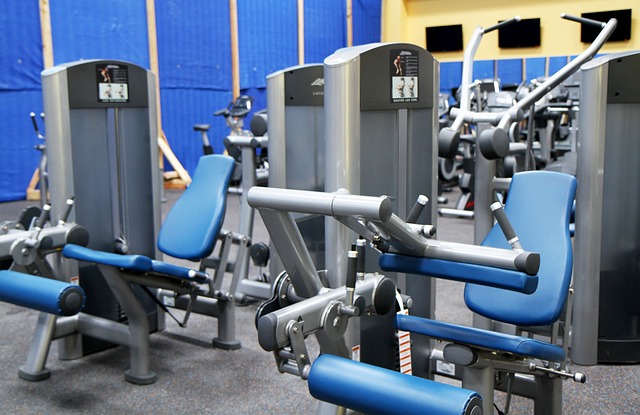A proper warm-up is an essential component of any strength training session. It prepares your body physically and mentally, reduces the risk of injury, and enhances performance by increasing blood flow, improving mobility, and activating key muscle groups. Yet, many people either skip warming up entirely or perform inefficient routines that fail to address their specific needs. In this article, we’ll break down how to structure an effective warm-up tailored to strength training, ensuring you’re ready to lift heavier, move better, and stay injury-free.
Why Is Warming Up Important?
Before diving into the structure of a warm-up, it’s crucial to understand its purpose:
- Increases Body Temperature: A warmer body improves muscle elasticity and joint lubrication, reducing the risk of strains or tears.
- Enhances Blood Flow: Improved circulation delivers oxygen and nutrients to working muscles, boosting energy production.
- Activates Muscles and Nerves: Targeted movements “wake up” the muscles and nervous system, improving coordination and power output.
- Improves Mobility and Range of Motion: Dynamic stretches and mobility drills prepare joints for the demands of lifting.
- Mental Preparation: A focused warm-up helps shift your mindset from daily distractions to the workout ahead.
Skipping or rushing through this phase can leave you unprepared, increasing the likelihood of poor form, suboptimal performance, or injury.
The 4-Step Warm-Up Framework
To create a comprehensive warm-up for strength training, follow this four-step framework:
Step 1: General Warm-Up (5-10 Minutes)
The goal here is to elevate your heart rate, increase body temperature, and get your blood flowing. This can be achieved through low-intensity cardiovascular exercises such as:
- Walking or jogging on a treadmill.
- Cycling on a stationary bike.
- Rowing machine intervals.
- Jump rope.
- Bodyweight movements like jumping jacks or high knees.
Choose an activity you enjoy and keep it light enough to avoid fatigue but intense enough to break a light sweat. Aim for 5-10 minutes, depending on your fitness level and the intensity of your planned workout.
Step 2: Dynamic Stretching and Mobility Drills (5-10 Minutes)
Dynamic stretching involves moving through a range of motion rather than holding static positions. These exercises improve flexibility, activate muscles, and prepare joints for the demands of lifting. Examples include:
- Leg Swings: Forward/backward and side-to-side swings to loosen hips.
- Arm Circles: Large circles to warm up shoulders.
- Hip Openers: Lunges with torso rotations to mobilize the hips and spine.
- World’s Greatest Stretch: A dynamic stretch targeting the hamstrings, hips, and thoracic spine.
- Cat-Cow Stretch: For spinal mobility and core engagement.
Focus on areas relevant to your workout. If you’re squatting, prioritize hip and ankle mobility. For upper-body lifts, emphasize shoulder and thoracic spine mobility.
Step 3: Movement-Specific Activation (5-10 Minutes)
This step involves exercises that mimic or directly target the primary movements of your workout. The goal is to “turn on” the muscles and motor patterns you’ll use during strength training. Examples include:
- Glute Bridges or Hip Thrusts: For glute activation before squats or deadlifts.
- Band Pull-Aparts: To engage rear delts and improve shoulder stability for pressing exercises.
- Planks or Bird-Dogs: To activate the core for stability in compound lifts.
- PVC Pipe Overhead Squats: To practice squat mechanics and assess mobility.
Use light resistance or bodyweight only—this is not the time to tire yourself out. Focus on quality movement and control.
Step 4: Workout-Specific Prep (5 Minutes)
The final step bridges the gap between your warm-up and the main workout. Perform 1-2 sets of the first exercise in your routine using lighter weights or reduced intensity. Gradually increase the load until you reach your working weight. For example:
- If your workout starts with barbell squats, begin with an empty barbell for 8-10 reps, then add weight incrementally across 2-3 sets.
- For bench press, start with just the bar or dumbbells at a lower weight before progressing to your planned load.
This process primes your nervous system, refines technique, and ensures you’re fully prepared for heavy lifting.
Sample Warm-Up Routine
Here’s an example of a structured warm-up for a lower-body strength training session (e.g., squats and deadlifts):
General Warm-Up (5-10 Minutes):
- 5 minutes on a rowing machine at a moderate pace.
Dynamic Stretching and Mobility (5-10 Minutes):
- Leg swings (front/back and side-to-side) – 10 reps per leg.
- Hip openers (lunges with torso rotation) – 5 reps per side.
- World’s Greatest Stretch – 3 reps per side.
- Cat-Cow stretch – 8 reps.
Movement-Specific Activation (5-10 Minutes):
- Glute bridges – 2 sets of 12 reps.
- Band pull-aparts – 2 sets of 15 reps.
- PVC pipe overhead squats – 2 sets of 8 reps.
Workout-Specific Prep (5 Minutes):
- Back squats with an empty barbell – 8 reps.
- Add weight progressively over 2-3 sets until reaching your working weight.
Tips for an Effective Warm-Up
- Tailor It to Your Workout: Customize your warm-up based on the exercises and muscle groups you’ll be targeting.
- Keep It Time-Efficient: Aim for 15-20 minutes total to avoid wasting energy before your main workout.
- Listen to Your Body: Adjust intensity and duration based on how your body feels that day.
- Avoid Static Stretching Before Lifting: Save static stretches for post-workout recovery; they can temporarily reduce strength and power output.
- Stay Consistent: Make warming up a non-negotiable part of every session—it’s an investment in your long-term success.
Common Mistakes to Avoid
- Skipping the Warm-Up Entirely: Even if you’re short on time, a quick warm-up is better than none.
- Overcomplicating It: Stick to simple, effective exercises rather than overloading your warm-up with unnecessary complexity.
- Going Too Hard: The warm-up should prepare you without causing fatigue.
- Ignoring Mobility Work: Neglecting mobility can lead to poor form and increased injury risk.

Leave a Reply